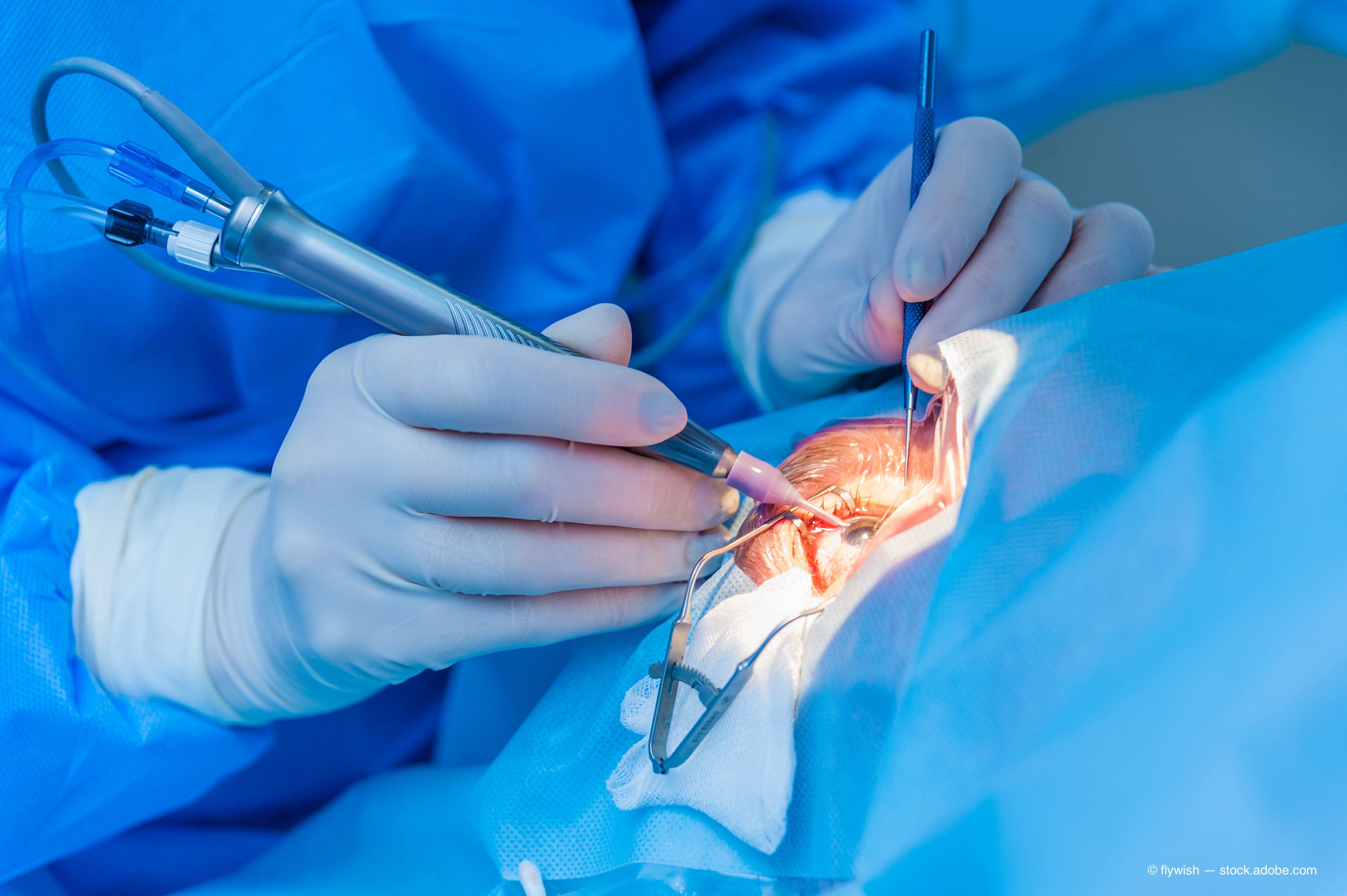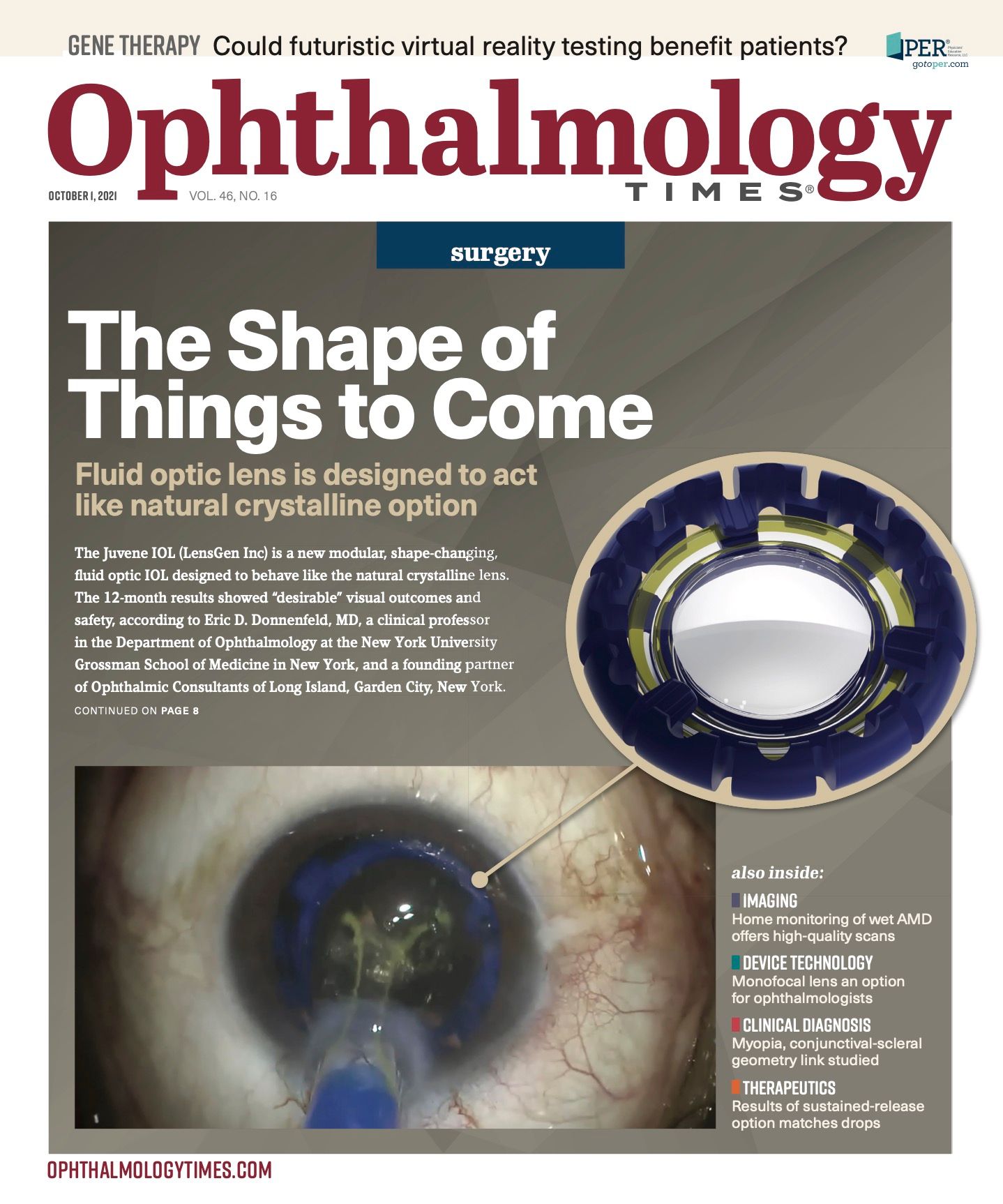Publication
Article
Digital Edition
Surgeons are changing delivery method
Author(s):
Sustained-release option is deposited directly into the lenticular capsule.

Reviewed by Lisa Nijm, MD, JD
The administration of dexamethasone intraocular suspension 9% (Dexycu, EyePoint Pharmaceuticals) has undergone a change.
Previously, it was injected into the posterior chamber after ocular surgery to manage postoperative inflammation.
Surgeons are injecting the bioerodible, sustained-release drug depot directly into the lenticular capsule after phacoemulsification and IOL implantation.
Related: Evaluating efficacy, safety of intracameral dexamethasone 9% vs topical regimen for cataract surgery
Lisa Nijm, MD, JD, medical director of Warrenville Eye Care in Illinois, shared her pearls for successful capsular bag administration of the suspension, which was approved in 2018 to manage inflammation after ocular surgery.
Once positioned intraocularly, the drug tapers over time as would be done with conventional topical drops, but the new route of administration reduces or eliminates patients’ treatment burden and adherence issues, she explained.
Nijm’s experience with this anti-inflammatory approach has been positive, as patients are comfortable and have no or minimal inflammation a day after surgery.
The original technique was for the dexamethasone suspension to be placed in the ciliary sulcus.
Related: Evaluating dexamethasone intraocular suspension 9% post-cataract surgery
The challenge with this, Nijm said, was the surgeon’s inability to visualize the placement of the droplet and its size.
Because this was a blind technique, there was potential for trauma to the iris and for drug migration to the anterior chamber or for the drug to be deposited on the optic of the intraocular lens, Nijm pointed out.
The capsular bag technique is an improvement on the previous method because the surgeon can visualize the placement and size of the dexamethasone delivered.
The iris is not in contact with the drug, the risk of drug migration decreases, and the procedure is performed more naturally by surgeons.
Nijm said she accidentally performed this technique while injecting dexamethasone in a patient with a large capsulorhexis.
Related: Novel ophthalmic pharmaceuticals drive innovation, improve outcomes
In this case, the Verisome sustained-delivery platform (EyePoint Pharmaceuticals) accidentally landed in and remained in the capsular bag and the outcome of the case was good.
This experience coincided with the work of Robert Osher, MD, and Robert Weinstock, MD, who had been working on placing dexamethasone intraocular suspension in the capsular bag.
The drug is prepared with a vortex mixing device that distributes the drug into suspension, which is then drawn into a syringe and a cannula attached. This step can be performed in advance and the suspension will remain uniform for up to 10 minutes.
According to Nijm, it is important for the surgeon to prepare the eye to ensure ease of injection of the dexamethasone suspension.
Related: Presbyopia-correcting IOL improves vision for patients
“The IOL should be well positioned and all other medications, such as antibiotics, should be administered before the dexamethasone is injected,” she said. “The primary injection site and the paracentesis should be well-sealed. Intraocular dexamethasone is the final step of the surgery.”
These steps will result in an anterior chamber that is deep and stable. The IOP should be in the normal range or slightly higher.
Nijm said she prefers to use a superior paracentesis to deliver the dexamethasone. She enters the anterior chamber through the paracentesis and goes inferiorly to the 6 o’clock or 8 o’clock position and places the cannula under the capsular bag distal to the IOL optic.
The size of the spherule should be approximately 2 mm. She then rubs the cannula tip lightly against the superior lip to dislodge the drug; if the spherule is too large, some drug can be aspirated out of the eye.
The cannula is removed in 1 rapid motion to minimize any leakage. The wound can be hydrated without dislodging the spherule. Wounds should be well sealed and the IOP optimal.
Related: Depth-of-focus enhancement makes target easier to hit
Nijm advised not performing this technique if the capsular bag is torn or if there is positive posterior pressure.
--
Lisa Nijm, MD, JD
E: LNijm@realworldophthalmology.com
This article is adapted from Nijm’s presentation at the Women in Ophthalmology 2021 Summer Symposium. Nijm is a consultant to EyePoint Pharmaceuticals.

Newsletter
Don’t miss out—get Ophthalmology Times updates on the latest clinical advancements and expert interviews, straight to your inbox.




